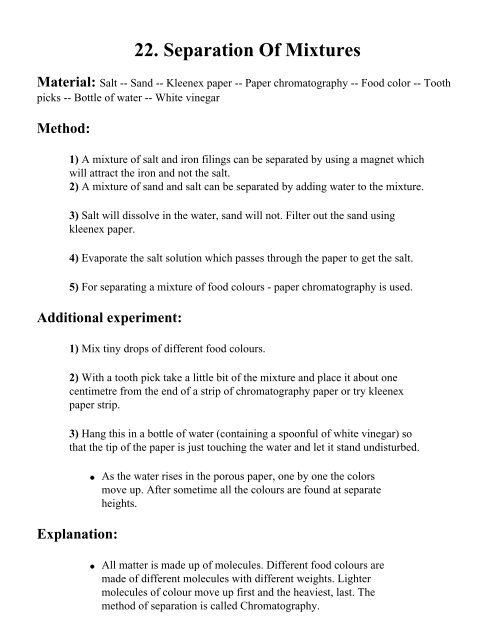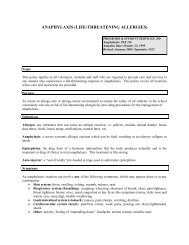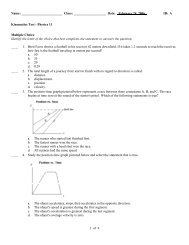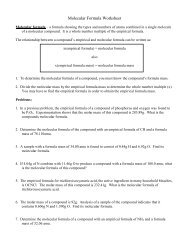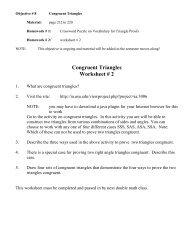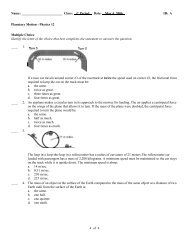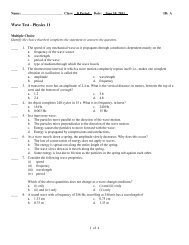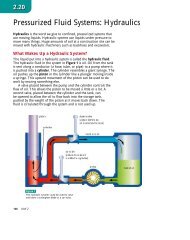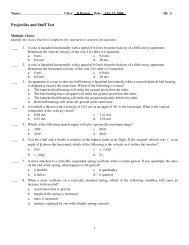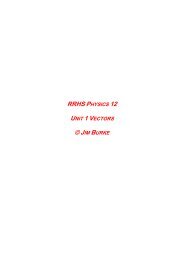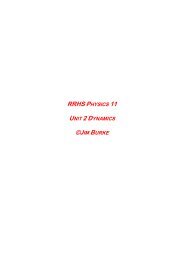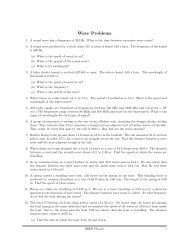a printable PDF document
a printable PDF document
a printable PDF document
You also want an ePaper? Increase the reach of your titles
YUMPU automatically turns print PDFs into web optimized ePapers that Google loves.
22. Separation Of Mixtures<br />
Material: Salt -- Sand -- Kleenex paper -- Paper chromatography -- Food color -- Tooth<br />
picks -- Bottle of water -- White vinegar<br />
Method:<br />
1) A mixture of salt and iron filings can be separated by using a magnet which<br />
will attract the iron and not the salt.<br />
2) A mixture of sand and salt can be separated by adding water to the mixture.<br />
3) Salt will dissolve in the water, sand will not. Filter out the sand using<br />
kleenex paper.<br />
4) Evaporate the salt solution which passes through the paper to get the salt.<br />
5) For separating a mixture of food colours - paper chromatography is used.<br />
Additional experiment:<br />
1) Mix tiny drops of different food colours.<br />
2) With a tooth pick take a little bit of the mixture and place it about one<br />
centimetre from the end of a strip of chromatography paper or try kleenex<br />
paper strip.<br />
3) Hang this in a bottle of water (containing a spoonful of white vinegar) so<br />
that the tip of the paper is just touching the water and let it stand undisturbed.<br />
●<br />
As the water rises in the porous paper, one by one the colors<br />
move up. After sometime all the colours are found at separate<br />
heights.<br />
Explanation:<br />
●<br />
All matter is made up of molecules. Different food colours are<br />
made of different molecules with different weights. Lighter<br />
molecules of colour move up first and the heaviest, last. The<br />
method of separation is called Chromatography.
Diagram of Experiment 22


